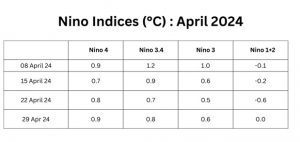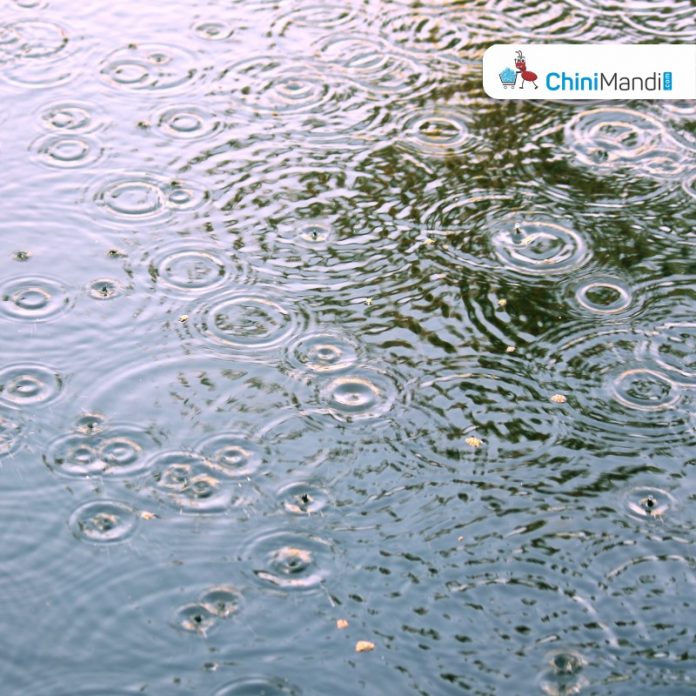Private weather bureau, Skymet, in its latest report said that the warming over the Pacific Ocean is still continuing.

The equatorial sea surface temperatures (SST’s) are above average in Nino 4, Nino 3.4, Nino 3 regions. Nino 1+2 has consistently recorded negative anomalies in the month of April 2024. However, during the last week, all indices have reversed the falling trend and warmed up marginally. For La Nina, the quarterly index necessarily has to drop below 0.5°C, which is unlikely to drop below 1°C for Feb-Mar-Apr. Therefore, ENSO neutral is unlikely before May end or June. Thereafter, it is likely to stay neutral till the end of July.
Skymet said that the Indian Ocean Dipole develops in the summer months (Jun-Jul-Aug) and generally peaks during the fall (Sep-Oct-Nov). In recent decades, two extremely positive IOD events occurred, in 1997 and 2019. Both events saved the Indian monsoon from the scare of drought.

According to Skymet, the IOD index for the week ending 28th April 2024 was +0.68°C, which is above the positive IOD threshold of +0.4°C. IOD index has been positive, maintaining above the threshold for the straight seventh week, since 17th March 2024.
Typically, a positive IOD event is considered underway, once the index is sustained above +0.40°C for about 8 weeks, subject to favourable atmospheric indicators.
A positive IOD event is likely to develop, earlier than usual, in the Indian Ocean. It is expected to peak in July and start narrowing, dropping below the threshold in Oct-Nov 2024. The development of positive IOD is a cheerful sign for the monsoon.












